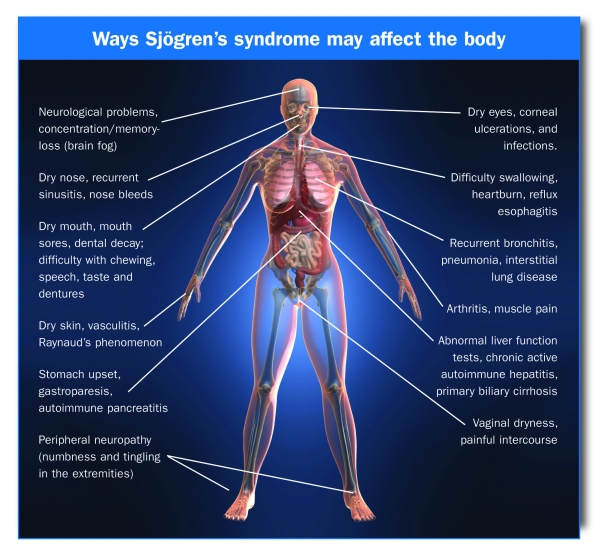Sjogren’s syndrome is a chronic autoimmune disease in which people’s white blood cells attack their moisture-producing glands. It is a common problem affecting around 0.5 % of the adult population.
Image 1

Nine out of ten Sjogren’s patients are women. The average age of diagnosis is late 40s, although it can occur in all age groups, including children, and in both sexes.
In the autoimmune attack that causes Sjogren’s, disease-fighting white blood cells called lymphocytes target the glands that produce moisture - primarily the lacrimal (tear) and salivary (saliva) glands. Although no one knows exactly how damage occurs, damaged glands can no longer produce tears and saliva, and eye and mouth dryness result.
There is no single test that will confirm diagnosis. Rheumatologists have primary responsibility for diagnosing and managing Sjogren’s syndrome and can conduct a series of tests, including Schirmer Test blood tests like ANA as well as a small biopsy from the lower lip.
Dry eyes and dry mouths are really a nuisance in these patients and are treated with simple steps like tear substitutes as well as frequent sips of water. If the dryness is very severe drugs which increase the secretion like Pilocarpine and cevimeline may be required. In addition to these drugs like Methotrexate and Rituximab may be helpful in patients who have joint pains as well as other manifestations of Sjogren’s syndrome.